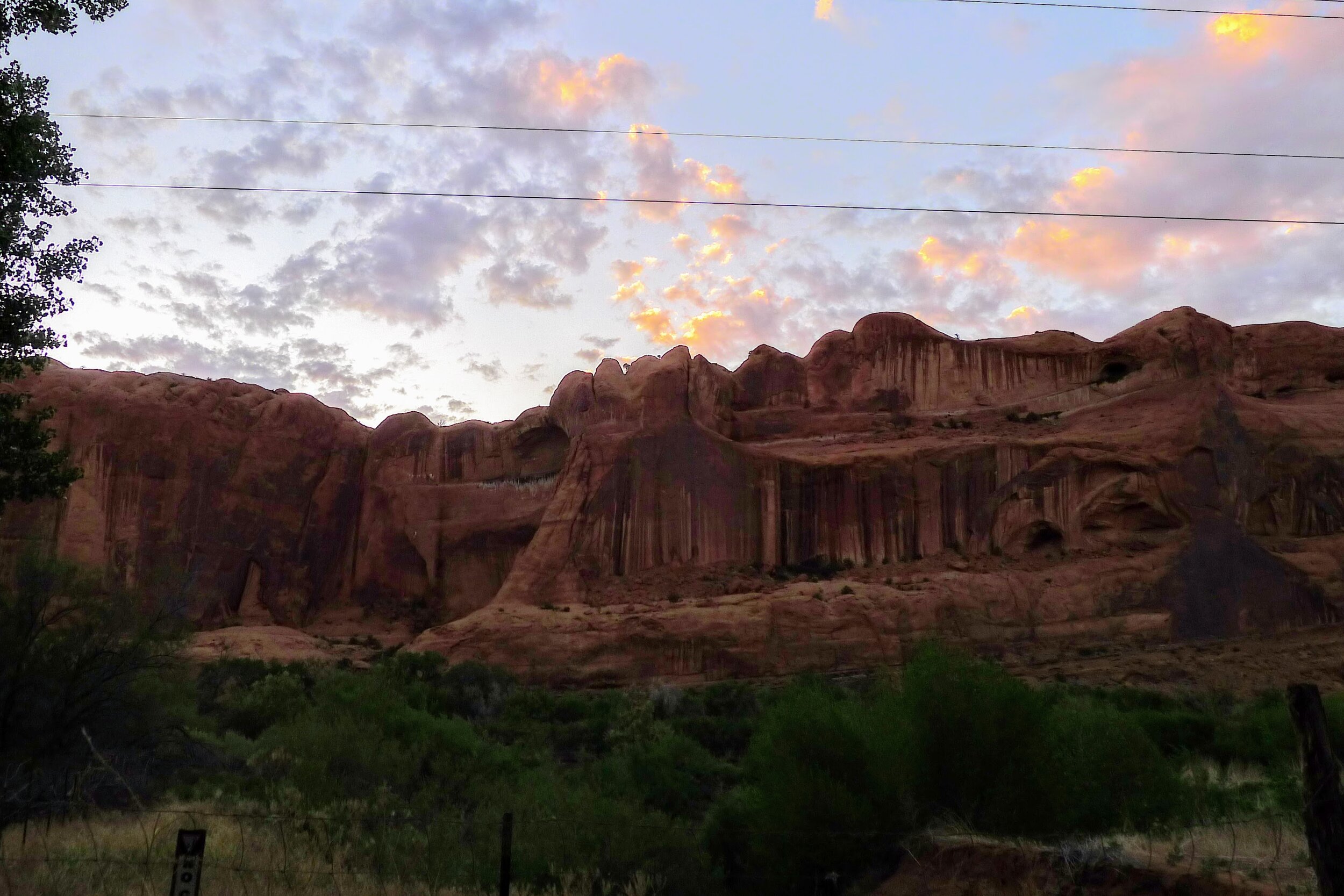UTAH
Canyonlands National Park, BLM Lands
Green River, accessed offroad in a convoy of “rigs.” I was a lucky passenger only. Even though I got a small SUV in part for this trip, our trip leader Amanda tells me it has “city wheels,” not offroad wheels. Back to the wheeling board.
Amanda, who leads adventures in the Southwest and the NC mountains, with the delicate-looking but intrepid Shelby.
Amanda with Stacey, a physician’s assistant and explorer, and the first friend I made when I returned to Chapel Hill from New York. We had young kids at the same time, and shared all manner of joys and sorrows when we lived on lovely, quirky Windsor Place.
Philip, a realtor, builder and pilot from NC, and Hooch, came along on their first trip to the Southwest.
Ella drove over from Colorado to light us up with her unfailing can-do, “I gotcha” attitude.
Franklin (AKA William), a roving land entrepreneur from Florida, was game for just about anything — including jumping into the freezing Columbia River (twice) and scaling a rock crevice in search of petroglyphs.
Alex, an architecture student originally from Albania, was game to test her rig in the rugged Utah outback — and pretty much anything else.
This gorgeous King Snake lives at a crossroads at Arches National Park.
Broken Arch, Arches National Park
“When you follow a wash, you’ll often find some shit.”
— Amanda Stormer Hartley
The Blooming Desert
Prickly Pear (Opuntia), native only to the Americas. Their fruit was an important food source for indigenous desert people.
Fun fact:
Prickly pears were introduced to Australia in the 1900s, and quickly converted farmland into “an impenetrable green jungle of prickly pear ... Scores of farmers were driven off their land by what they called the ‘green hell’; their abandoned homes were crushed under the cactus growth, which advanced at a rate of 400,000 hectares (1,000,000 acres) per year.”
Finally, in 1925, the Australian government’s Commonwealth Prickly Pear Board introduced a South American moth that fed on prickly pear, greatly reducing the invader. (Wikipedia).
California Poppy (Eschscholtzia californica), the state flower of California — but what do flowers know about boundaries?
Strange Formations
Petroglyphs
Swimmin Hole
This is a popular spot, and we were psyched to cool off after a 100-degree hike. Alas, the drought had left only a sad, muddy puddle. These revelers and their dogs were determined to make it a day regardless.
This area gets 9.2 inches of precipitation a year, mostly via melting snow, and most of which evaporates quickly rather than accumulated (desertusa.com). Because the earth is largely sand, which doesn’t absorb water, when it does rain, the water stays on the surface, leading to flash floods. It’s one tough customer, the desert.
Our group (Alex, Amanda, Ella, Franklin, and Philip), dressed out for swimming, ended up drinking instead.
Western Utah
Town of Green River
Population (2019): 856
“Green River’s current economy relies on seasonal waves of tourism powered by the town’s hotels, gas stations, and restaurants, which employ the majority of residents. In the spring of 2020, COVID-19 closures all but eliminated the town’s major source of income immediately after the winter, when Green River sees very few visitors and many workers have already been furloughed.
The COVID-19 crisis froze Green River’s annual economic upswing, and seasonal hospitality, service-based, and agriculture/ recreation businesses and their workers are still suffering the consequences” (2020 Annual Report, Epicenter community development non-profit www.ruralandproud.org).
Above and below, the Green River itsownself. The main tributary of the Colorado River, its 730 miles run through Wyoming, Utah and a small corner of Colorado. Taken from the John Wesley Powell River History Museum, well-curated and interesting. Also surprising in such a small “city.”
Headquarters of Epicenter, a community development non-profit based in Green River whose motto is “Rural and Proud.”
Mission statement: “Epicenter stewards creative initiatives that honor the past, strengthen the present, and build the future that we envision alongside our community.
Located in Green River, Utah, Epicenter is a vibrant hub for rural investment and cultural exploration of the rural West” (www.ruralandproud.org).














































































